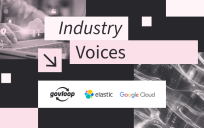Overview
The integration of AI chatbots in government services is revolutionizing how agencies interact with citizens. By automating routine inquiries and providing 24/7 support, AI chatbots are helping governments enhance accessibility, efficiency, and satisfaction. In the private sector, chatbots are already streamlining customer service processes, and their public sector adoption is scaling rapidly.

Examples like the UK’s HM Revenue and Customs chatbot, which manages millions of inquiries annually, and Utah’s AI-driven unemployment assistance system, which expedited claims during the pandemic, showcase how chatbots can address high-demand services effectively.
The Benefits of AI Chatbots in Government
- Improved Efficiency: Automating repetitive tasks allows government staff to focus on complex and high-value issues.
- Enhanced Accessibility: AI systems offer multilingual support and cater to citizens with disabilities, ensuring inclusivity.
- Cost Savings: Chatbots reduce administrative overhead by handling high volumes of inquiries without requiring additional staffing.
- Real-Time Feedback: Data collected from chatbot interactions provides actionable insights to improve services.
- Increasing AI Technology Innovation: Utah is the first-in-the-nation office for AI policy, regulation and innovation, signifying Utah’s commitment to being at the forefront of AI policy and collaborative regulation.
Challenges and Mitigation Strategies
While chatbots offer significant benefits, there are critical issues that governments must address to ensure successful implementation. Data privacy is a primary concern, as chatbots often handle sensitive input such as personally identifiable information, tax data, or health inquiries. Governments must implement robust data encryption, secure storage practices, and strict access controls to prevent unauthorized access and breaches. Regular audits and compliance with established data protection laws, such as the GDPR in Europe or CISA guidelines in the U.S., further ensure citizen data remains secure.
System bias is another challenge that can undermine the effectiveness of AI chatbots. Bias can arise from unrepresentative training data or flawed algorithms, leading to unfair or inaccurate responses. For instance, a chatbot may unintentionally favor one language or demographic over another, creating accessibility gaps. Governments can mitigate this by requiring diverse datasets during the development phase and conducting regular bias audits. Collaborating with organizations specializing in AI ethics can also help maintain fairness and inclusivity.
Public trust is critical for adoption. Citizens may be hesitant to interact with chatbots due to concerns about accuracy, accountability, or transparency. Governments must openly communicate the scope and limitations of chatbot capabilities, making it clear when a chatbot is responding versus when escalation to a human is necessary. Transparency in how data is used and protected is vital to build trust.
Frameworks like the NIST AI Risk Management Framework provide governments with a structured approach to address these challenges. This framework emphasizes accountability, transparency, and continual assessment of AI systems. By adhering to these principles, agencies can proactively identify and mitigate risks, ensuring chatbots operate ethically and securely.
Citizen education is equally important. Governments should launch public awareness campaigns to inform users about chatbot capabilities, data protection measures, and the benefits of AI-driven services. For example, interactive tutorials or FAQ sections can help citizens feel confident using chatbots. Including a clear feedback mechanism within the chatbot interface allows users to report concerns, which can be used to improve system performance.
By addressing these concerns holistically — through technical safeguards, ethical guidelines, and proactive education — governments can maximize the benefits of chatbot technology while maintaining public confidence and inclusivity. This approach not only ensures ethical implementation but also sets the foundation for greater innovation in AI-driven public services.
Advocacy
Governments should partner with AI providers and research institutions to design tailored chatbot systems. Agencies must also ensure that their chatbots are regularly updated to reflect policy changes and user needs. A phased rollout, starting with pilot programs in high-demand services, allows agencies to refine and scale their systems effectively.
Call to Action
Federal, state, and local agencies must prioritize AI adoption to meet rising citizen expectations. Starting with customer-facing services like tax filing, unemployment assistance, or licensing inquiries ensures maximum impact.
Dr. Rhonda Farrell is a transformation advisor with decades of experience driving impactful change and strategic growth for DoD, IC, Joint, and commercial agencies and organizations. She has a robust background in digital transformation, organizational development, and process improvement, offering a unique perspective that combines technical expertise with a deep understanding of business dynamics. As a strategy and innovation leader, she aligns with CIO, CTO, CDO, CISO, and Chief of Staff initiatives to identify strategic gaps, realign missions, and re-engineer organizations. Based in Baltimore and a proud US Marine Corps veteran, she brings a disciplined, resilient, and mission-focused approach to her work, enabling organizations to pivot and innovate successfully.





Leave a Reply
You must be logged in to post a comment.